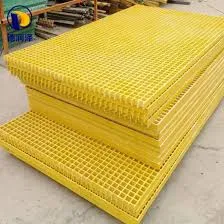
-
 Afrikaans
Afrikaans -
 Albanian
Albanian -
 Amharic
Amharic -
 Arabic
Arabic -
 Armenian
Armenian -
 Azerbaijani
Azerbaijani -
 Basque
Basque -
 Belarusian
Belarusian -
 Bengali
Bengali -
 Bosnian
Bosnian -
 Bulgarian
Bulgarian -
 Catalan
Catalan -
 Cebuano
Cebuano -
 China
China -
 China (Taiwan)
China (Taiwan) -
 Corsican
Corsican -
 Croatian
Croatian -
 Czech
Czech -
 Danish
Danish -
 Dutch
Dutch -
 English
English -
 Esperanto
Esperanto -
 Estonian
Estonian -
 Finnish
Finnish -
 French
French -
 Frisian
Frisian -
 Galician
Galician -
 Georgian
Georgian -
 German
German -
 Greek
Greek -
 Gujarati
Gujarati -
 Haitian Creole
Haitian Creole -
 hausa
hausa -
 hawaiian
hawaiian -
 Hebrew
Hebrew -
 Hindi
Hindi -
 Miao
Miao -
 Hungarian
Hungarian -
 Icelandic
Icelandic -
 igbo
igbo -
 Indonesian
Indonesian -
 irish
irish -
 Italian
Italian -
 Japanese
Japanese -
 Javanese
Javanese -
 Kannada
Kannada -
 kazakh
kazakh -
 Khmer
Khmer -
 Rwandese
Rwandese -
 Korean
Korean -
 Kurdish
Kurdish -
 Kyrgyz
Kyrgyz -
 Lao
Lao -
 Latin
Latin -
 Latvian
Latvian -
 Lithuanian
Lithuanian -
 Luxembourgish
Luxembourgish -
 Macedonian
Macedonian -
 Malgashi
Malgashi -
 Malay
Malay -
 Malayalam
Malayalam -
 Maltese
Maltese -
 Maori
Maori -
 Marathi
Marathi -
 Mongolian
Mongolian -
 Myanmar
Myanmar -
 Nepali
Nepali -
 Norwegian
Norwegian -
 Norwegian
Norwegian -
 Occitan
Occitan -
 Pashto
Pashto -
 Persian
Persian -
 Polish
Polish -
 Portuguese
Portuguese -
 Punjabi
Punjabi -
 Romanian
Romanian -
 Russian
Russian -
 Samoan
Samoan -
 Scottish Gaelic
Scottish Gaelic -
 Serbian
Serbian -
 Sesotho
Sesotho -
 Shona
Shona -
 Sindhi
Sindhi -
 Sinhala
Sinhala -
 Slovak
Slovak -
 Slovenian
Slovenian -
 Somali
Somali -
 Spanish
Spanish -
 Sundanese
Sundanese -
 Swahili
Swahili -
 Swedish
Swedish -
 Tagalog
Tagalog -
 Tajik
Tajik -
 Tamil
Tamil -
 Tatar
Tatar -
 Telugu
Telugu -
 Thai
Thai -
 Turkish
Turkish -
 Turkmen
Turkmen -
 Ukrainian
Ukrainian -
 Urdu
Urdu -
 Uighur
Uighur -
 Uzbek
Uzbek -
 Vietnamese
Vietnamese -
 Welsh
Welsh -
 Bantu
Bantu -
 Yiddish
Yiddish -
 Yoruba
Yoruba -
 Zulu
Zulu
grp car body
Exploring the Evolution and Impact of GRP Car Bodies
In the realm of automotive engineering, the advent of Glass Reinforced Plastics (GRP), also known as fiberglass, has revolutionized the way car bodies are designed and produced. This innovation not only enhances vehicle performance but also allows for more creative and flexible designs. In this article, we will delve into the characteristics of GRP car bodies, their advantages, and their growing significance in the automotive industry.
What is GRP?
Glass Reinforced Plastics are composite materials made from a polymer matrix reinforced with glass fibers. This combination results in a lightweight, durable material that exhibits excellent strength-to-weight ratios, making it a preferred choice for many automotive applications. Historically, the use of GRP in car manufacturing can be traced back to the mid-20th century, when manufacturers began to recognize its potential for creating both robust and lightweight vehicle structures.
Advantages of GRP Car Bodies
Exploring the Evolution and Impact of GRP Car Bodies
2. Corrosion Resistance Unlike metal bodies that are susceptible to rust and corrosion, GRP is inherently resistant to these issues. This property extends the lifespan of a vehicle and reduces maintenance costs for owners. As environmental concerns have led to stricter regulations on automobile longevity and recyclability, GRP offers a compelling solution.
grp car body

3. Design Flexibility The versatility of GRP allows for greater creativity in design. It can be molded into complex shapes, providing designers with the freedom to create unique and aerodynamic vehicle profiles that were previously difficult or impossible to achieve with conventional materials. This characteristic is especially valuable in the competitive automotive market, where aesthetics play a crucial role in consumer purchasing decisions.
4. Impact Resistance GRP is known for its impact-resistant properties. This makes it a suitable option for sports cars and other high-performance vehicles, where both safety and durability are paramount. The ability of GRP to absorb energy during collisions helps in providing better safety to occupants.
The Impact on the Automotive Industry
The incorporation of GRP into car manufacturing has led to substantial changes in the automotive industry. Not only has it enhanced vehicle performance and safety, but it has also opened up new markets for innovative designs. Manufacturers like Lamborghini and Aston Martin have utilized GRP technology to create some of the most iconic supercars known for their lightweight construction and high-speed capabilities.
Moreover, as sustainability becomes increasingly important, the automotive sector is exploring recyclable composites and other eco-friendly materials. GRP not only provides a lightweight alternative but can also be produced with lower energy inputs compared to traditional metalworking processes. This alignment with sustainable practices positions the automotive industry for a greener future.
Conclusion
In conclusion, GRP car bodies represent a significant advancement in automotive technology. With their lightweight, durable, and corrosion-resistant properties, they are transforming the way vehicles are manufactured and designed. As automakers continue to embrace innovative materials like GRP, we can expect to see even more remarkable changes within the automotive industry, leading to enhanced performance, safety, and sustainability for future generations of vehicles. As we move forward, the evolution of materials like GRP will undoubtedly play a critical role in shaping the future landscape of automotive design and manufacturing.









